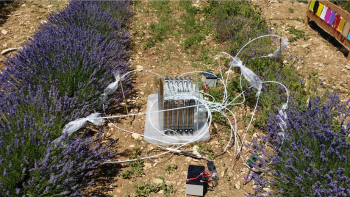Our researchVOCs: from the molecules to the environment
The LBVpam aims to enhance the understanding of volatile organic compounds (VOCs) produced by perfume, aromatic, and medicinal plants (PAMs).
These compounds play key ecological roles, including attracting pollinators, deterring pests, responding to abiotic stress, and facilitating allelopathic interactions, all of which are studied in the field of chemical ecology.
Additionally, the volatile compounds produced by plants can serve as bioactive molecules of interest for the pharmaceutical and perfume industries, particularly in the chemistry of essential oils. Ultimately, the knowledge generated by this unit aims to benefit the aromatic and medicinal plant industries, as well as horticultural companies, in their efforts to develop new plant varieties.
Our overall research aim is to understand the biology of volatile compounds, mainly terpenoids in plants, from biosynthesis to ecological impact and back again.
Our research is organized around the central question of the mechanisms of production of volatile compounds in PAM plants, in two main scientific axes ↓
|
|
|
|
This research explores the genes involved in the biosynthesis of terpenoids, which are vital for plant aroma, flavour, and defence. The focus is on terpene synthases, enzymes that convert precursors into diverse terpenoid products. By studying these enzymes across all plant clades and using advanced modelling techniques, the research aims to predict terpenoid products and understand their applications in pharmacology, agriculture, and biotechnology. The goal is to bridge genetic research and practical applications to deepen our understanding of terpenoids. |
This research explores how plants communicate with their environment through volatile compounds, including terpenoids, focusing on the signal pathways that regulate their biosynthesis, transport, and release. Understanding these pathways and their genetic regulation is crucial for insights into the roles of volatile terpenoids in communication, defence, and environmental interactions. The study examines the variability of these compounds across different interactions, populations, and species, linking genetic, environmental, and evolutionary factors to understand their diversity and functionality. |



 Université Jean Monnet
Université Jean Monnet